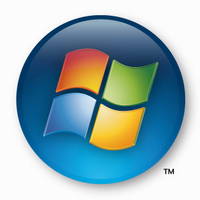Wintel Vista conspiracy screws customers: Another win for Apple


This amazing story continues to unfold. Microsoft officials gave the green light to Vista certification for an older Intel chipset with integrated graphics that wouldn't support Aero. According to reports, back in 2006, Intel decided that it might not be able to ramp up production for its 945 chipset (or ramp up its marketing program for the new chipset), the one that could run Vista, so it asked Redmond to grandfather in the older chipset. And it seems that lots of important people knew about this.
Beyond all the complaints online, the internal details have come to the light because of a lawsuit. Recently, the court released more than 150 pages of redacted memos from the companies. You can just click a random page or two and come up with something interesting (The pages in the PDF are images rather than text and that makes searching difficult.)
For example, the November 2005 list of "context" from Brad Goldberg, then general manger with Microsoft's Windows Client Product group (page 153). He said that customers didn't want "detailed documentation" on the capabilities of their machine to handle the important new features in Vista such as Aero Glass, Windows Defender and Flip3D.
Of course, these would be the very features that they would hype for the upgrade.
Really more to the point, sales persons at stores weren't capable in November 2006 or 2007 (or perhaps incapable maybe even today) of describing the features of Vista and why potential buyers would want them. I point to the continuing movement to remove Vista and give Windows users what they want, which is Windows XP.
•Customers may not have any context from phrases like "Aero Glass or Windows Defender or Slideshow." The average consumer would not know whether (s)he needs Aero Glass or Windows Defender or not. Retail sales person cannot explain what Aero Glass is or what it will do for them 4 to 6 months prior to [the] Vista launch.
•Today users buying tunerless MCE systems aren't calling us to complain that they can't watch live TV on their PCs.
•It's taking us [an] incredibly long time to explain to OEMs the benefits and value prop of each feature/scenario. How can we communicate this to an end-user in a document when [the] vast majority of customers can't understand what an OS does for them?
•I don not see any benefit of providing such a list to customers when they are in the store buying a PC, not an OS. Trying to "educate" customers about features of an OS that is not available may very well confuse them and cause them to delay their purchase — the exact opposite of what we want to see.
•Less than 5 percent of customers typically upgrade their OS. Let's not confuse the masses for the sake of providing clarity to "enthusiasts."
Based on the constant feedback from our partners to keep the messaging simple, I think the best thing is to say: "A Windows Vista capable PC will upgrade and run the equivalent version of Windows Vista."
I haven't read the full package of memos to know where Goldberg came down on the Intel chipset issue. But there's plenty of nonsense in this memo.
It's plain to see that Microsoft, Intel and PC makers really didn't care about customers and customer experience with the technology. Rather, the concern was about the buying experience. Once the machine was at home then a different quality of service group would handle the support call.
Certainly, Microsoft wasn't worried the "enthusiasts," the very users who would be the early adopters of Vista. In the Apple playbook, these influencers are the drivers of technology adoption and help out the marketing effort with word of mouth. But screw 'em, the memo says. Far better to avoid confusion of the dumb masses.
After all it's only 5 percent of our users. And where will they go?
Maybe just maybe, they will go the Macintosh. It's a machine that can run their old Windows programs as well as a wonderful, stable operating system with elegant programs. But then again, as the memo above said, "vast majority of customers can't understand what an OS does for them." Maybe it's time they did?
Perhaps Wintel customers will finally grow tired of reading evidence that they have been screwed by their technology providers and who continue to treat them poorly, at best.
For a bit of context, Mac OS X Leopard will run on a Mac with an Intel or PowerPC G5 processor or a PowerPC G4 with a 867MHz or faster processor; that has a DVD drive and 9GB of available disk space. The hardware spec says that the minimum memory requirement is 512MB, but this is unrealistic. However, almost all Mac users recognize this and have at least 1GB of RAM (and more is better).
And by many accounts, the Leopard interface feels peppier on the older machines.
Read more about Mac "switchers" here:
Do switchers now rule the Mac?
Macs and iPhones: impolitic Apple hardware can be hard to hide